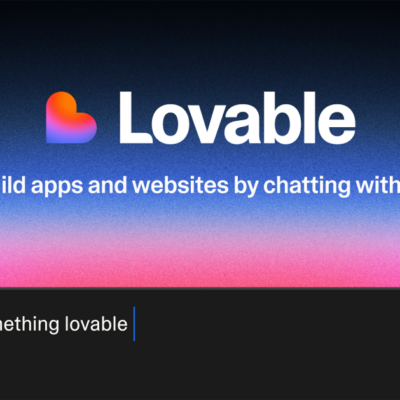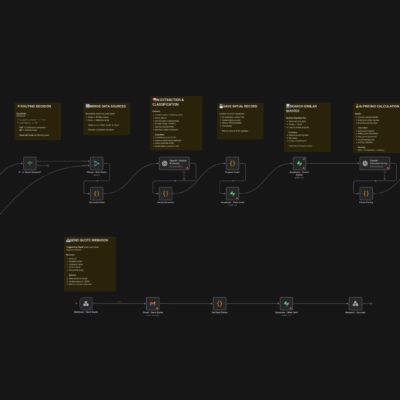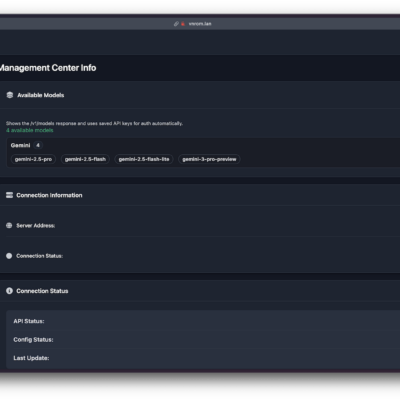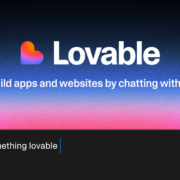The world of AI is buzzing with innovation, and if you’re building with artificial intelligence, you’ve likely asked yourself: “What’s next?” Whether your goal is to monetize AI, leverage it for your existing business, build out of pure passion, or simply become a more valuable employee, the opportunities are vast. Based on my own journey and insights from countless individuals in the AI space, gaining clarity on how to take your AI skills further is paramount.
In this guide, I’ll walk you through the distinct paths available, sharing personal experiences and real-world examples to help you navigate your next steps. My aim is to provide a clear roadmap so you can choose the direction that’s right for you and confidently advance your AI journey.
My Journey into AI Automation and Entrepreneurship
My path into the AI space wasn’t an overnight success story, but rather a gradual evolution driven by curiosity and a desire to create value. Like many, I started with a traditional background. I studied business analytics and marketing in college, without any formal coding education. After graduating, I joined Goldman Sachs, working in automation. This role familiarized me with systems thinking and efficiency, but my practical AI use was limited to basic tools like ChatGPT for simple tasks.
The real shift began when I started looking for ways to enhance my value at work. I discovered the rabbit hole of AI automation. I noticed that in almost every automation project, a decision point would arise. I remember thinking, “If only I could plug this into ChatGPT.” Little did I know, you actually could.
From Hobbyist to Full-Time AI Freelancer
Driven by this realization, I started building AI automations in my free time, learning no-code workflow builders similar to the ones I used at work. I began sharing my builds on YouTube, even though I didn’t consider myself an expert. What truly astonished me was the immediate demand. Before I even had 500 subscribers, I was receiving a couple of emails a week from business owners asking for help building automations or purchasing ones they’d seen on my channel.
This led to my first AI-related income: selling an AI workflow for $1,200 that took me only two hours to build. It was designed to help someone create LinkedIn posts faster. This experience was incredibly validating and incredibly addictive. I found myself sprinting home from work, eager to build more, create more videos, and dive deeper into AI automation. It wasn’t about the money at first; it was about the genuine excitement and passion for learning.
Eventually, my passion for AI began to overshadow my day job. I found myself daydreaming about building automations at work. This introspection led me to realize that spending my days doing something I genuinely loved, even if the income remained similar, was a trade I was willing to make. My motivation wasn’t simply to make money, but to do what I enjoyed for money.
Given the internal regulations at my large firm, quarterbacking an AI automation initiative from within wasn’t feasible. However, with my YouTube channel growing and consistent inbound leads for freelance work, I felt secure enough to make a relatively safe transition: becoming a full-time AI freelancer.
Evolving into an AI Consultant and Business Owner
The AI automation space was exploding, with “AI agents” becoming a hockey stick trend in search. While there was a lot of hype about easy starts and quick riches in AI, my transition was far more deliberate. I focused on teaching automation foundations rather than discussing business models early on.
As a full-time freelancer, my content and automations improved significantly. I quickly hit $3,000, $6,000, and then $10,000 in monthly income by taking on custom, one-off projects for business owners. This phase was invaluable, providing hands-on experience in discovery calls, project scoping, sales, development, and delivery.
The next natural progression was addressing bandwidth limitations. With more leads coming in than I could handle, I began thinking about bringing on help. Having worn all those hats myself—from sales to development—I knew exactly what to look for when hiring.
Another key mindset shift occurred: moving from selling one-time templates to diagnosing problems and pitching AI as a solution for longer-term partnerships. The market for AI automation templates was becoming commoditized, and I realized that bespoke, custom solutions, though less scalable than products, allowed me to provide deeper value. This marked my evolution from an AI builder and freelancer to an AI consultant, eventually leading to co-founding True Horizon, an AI business, and establishing a large community for AI automation.
My journey highlights a common progression: starting as a passionate learner, recognizing demand as a freelancer, going full-time on projects, and finally stepping into a consultant role, building a team and a business.
Understanding Your AI Path: Different Angles to Monetize Your Skills
While my story provides one example, there are diverse ways to leverage and monetize AI skills, each tailored to different life stages and goals.
1. For the Passionate AI Learner
If you’re just starting your AI journey, building out of passion, or simply enjoying the learning process, monetization offers valuable validation. It confirms that your skills are in demand and that people are willing to pay for what you build. This initial income can provide the freedom to dedicate more time and resources to your passion projects, without the pressure of it becoming your sole income source or a full-blown company. It’s a fantastic starting point to gain experience and build confidence.
2. For the Aspiring AI Entrepreneur
The skill set of AI automation is in incredibly high demand, with a relatively low supply of skilled professionals. This creates a fertile ground for building a business. If you’re an aspiring entrepreneur, the key is to take it one step at a time. This often means:
- Wearing all the hats initially: From building to selling to marketing.
- Genuine excitement: Your passion will fuel your persistence.
- Communicating value: Clearly articulating how your AI solutions solve problems.
- Seeking a partner: Especially for first-time entrepreneurs, a co-founder can make the journey 10 times better.
3. For the Existing Business Owner
For those already running a business, leveraging AI automation is straightforward: it’s about efficiency and growth. Automating repetitive tasks frees up time, focus, and energy for you and your employees. This saved time can then be reinvested into strategic growth initiatives, making your company more competitive and profitable. AI becomes a tool for internal optimization and scaling.
4. For the Ambitious Employee
If you’re an employee, AI can transform your productivity and value within your organization. The goal is to make yourself a “superhuman” when it comes to efficiency. By strategically implementing AI, you can:
- Increase personal productivity: Automate mundane tasks, speed up workflows.
- Add more value to your company: Solve internal bottlenecks, improve processes.
- Position for promotions and higher pay: Become an indispensable expert.
- Enhance job security: Demonstrate your ability to adapt and innovate with technology.
Practical Steps to Monetize AI Skills and Advance Your Journey
Now that you understand the different “whys,” let’s explore the “hows” for each path.
If You’re Passionate About Building with AI
Ask yourself: Do you enjoy building with AI more than your day job? Would you want to do it all day long? If the answer is yes, then consider these steps:
- Start as an AI Freelancer (After Work): Begin by taking on side projects at your own pace. This allows you to gain real-world experience, build a portfolio, and start earning income without immediately quitting your job.
- Transition to AI Consultant: Once you feel comfortable and have a consistent stream of clients, you can evolve into an AI consultant. This typically involves diagnosing broader business problems and offering more comprehensive AI solutions, rather than just delivering specific builds.
If You’re an Aspiring AI Entrepreneur
The AI space can seem like a gold mine, with many gurus promising quick riches and autopilot businesses. However, it’s crucial to take gradual, committed steps rather than making reckless jumps.
- Get Proof of Concept: Don’t quit your job and gamble everything. Learn to build and sell automations first as an AI freelancer. This “proof of concept” phase is vital.
- Become an AI Consultant: Just like a doctor is more valuable than a pharmacist, you want to be able to diagnose a client’s core problem and provide a tailored AI solution, rather than just handing them a pre-made “prescription” (template) that someone else told them they needed. This deeper engagement offers more value and higher earning potential.
If You’re an Existing Business Owner
Leveraging AI within your business is a systematic process of identifying and automating inefficiencies.
- Start Step by Step: Identify one daily or weekly task that you or your employees consistently perform.
- Automate That Process: Find an AI solution to streamline or fully automate that specific task.
- Measure the Value: Understand how much time, money, or resources this automation saves your business.
- Repeat: Once successful, identify the next most common or time-consuming task and automate it.
- Become Your Own AI Consultant: By repeatedly applying this process, you effectively become an in-house AI consultant, continually optimizing your operations.
If You’re an Employee
To become an invaluable AI expert within your company, focus on practical application and knowledge sharing.
- Map AI Use Cases: Write down every area of your role where AI can be used to improve efficiency or outcomes.
- Implement Gradually: Start applying AI tools and custom automations to those areas.
- Educate Your Team: Share your knowledge and teach colleagues how they can leverage AI to become more productive.
- Become an AI Expert: Over time, you’ll be viewed as the go-to AI expert, demonstrating undeniable value to the business and positioning yourself for career advancement.
Real-World Examples of AI Success
To illustrate these paths, let’s look at how individuals are practically leveraging AI today.
1. The AI Freelancer: Dan’s Finance Workflow
Dan built a finance-focused workflow that performs budget-versus-actual analysis and identifies key drivers behind variances. He shared this build on LinkedIn, generating positive feedback, leads, and even a job offer. Without a massive following, Dan secured his first client as an AI freelancer. The system’s goal was to save his client over 10 hours a month on manual financial planning and analysis.
Dan’s success highlights the power of sharing your work. Even if you don’t feel like an expert, documenting and sharing your builds on platforms like LinkedIn or Medium can attract clients and opportunities. People often relate more to someone who is openly learning and building, fostering trust and connection.
2. From Freelancer to AI Consultant/Business: Lars’s Agency Launch
Lars started by building AI automations for friends and his warm network as an AI freelancer. This allowed him to gain experience wearing multiple hats and gather valuable case studies and testimonials. With this foundation, he is now launching his AI agency with a team. He’s also starting a YouTube channel to generate inbound leads.
Lars and his team are not only delivering solutions like personalized LinkedIn posts and automated blog posts but are also diving into scoping, helping businesses identify exactly where AI automation can provide the most value. This demonstrates the transition from individual builds to strategic consultancy and team-based service delivery.
3. Business Owner Leveraging AI: Aiden’s Car Detailing Transformation
Aiden, who runs a car detailing company, used local Meta ads, which generated leads at $8 each. He built an AI system where leads submitting their information through an ad form would receive a personalized PDF report on how to protect their car. After implementing this, his lead costs plummeted from $8 to an incredible $1. To handle the increased volume of cheaper leads, he then built a voice agent to respond to them even faster.
Aiden’s story is a powerful example of how building an automation for your own business can dramatically scale operations, especially for solo entrepreneurs.
4. Employee Using AI for Performance: Brian’s AI Slackbot “Vicki”
Brian, an employee, built an AI Slackbot named Vicki to solve a major onboarding bottleneck. Previously, new team members took 6 to 8 weeks to ramp up. Vicki, a RAG-trained assistant that pulls from playbooks, SOPs, and transcripts, now provides instant answers. This has compressed onboarding time from 6-8 weeks down to 2-3 weeks, a massive time-saving and a wonderful demonstration of AI’s impact within an organization.
These examples underscore that regardless of your current situation—whether you’re an aspiring builder, entrepreneur, business owner, or employee—there are tangible, effective ways to integrate AI and unlock significant value.
Conclusion
The journey into monetizing your AI skills is both exciting and deeply rewarding. As we’ve explored, there isn’t a single “right” path, but rather a spectrum of opportunities tailored to different aspirations and circumstances. Whether you start by freelancing on the side, gradually build an AI consultancy, automate your existing business processes, or become an indispensable AI expert within your company, the underlying principle remains the same: identify problems, leverage AI to create solutions, and communicate that value effectively.
My personal experience, alongside the successes of individuals like Dan, Lars, Aiden, and Brian, reinforces that passion, continuous learning, and a willingness to put your work out there are key ingredients. The AI landscape is evolving rapidly, and by embracing these approaches, you can confidently navigate its complexities, build impactful solutions, and truly make your mark. The time to advance your AI journey is now.









